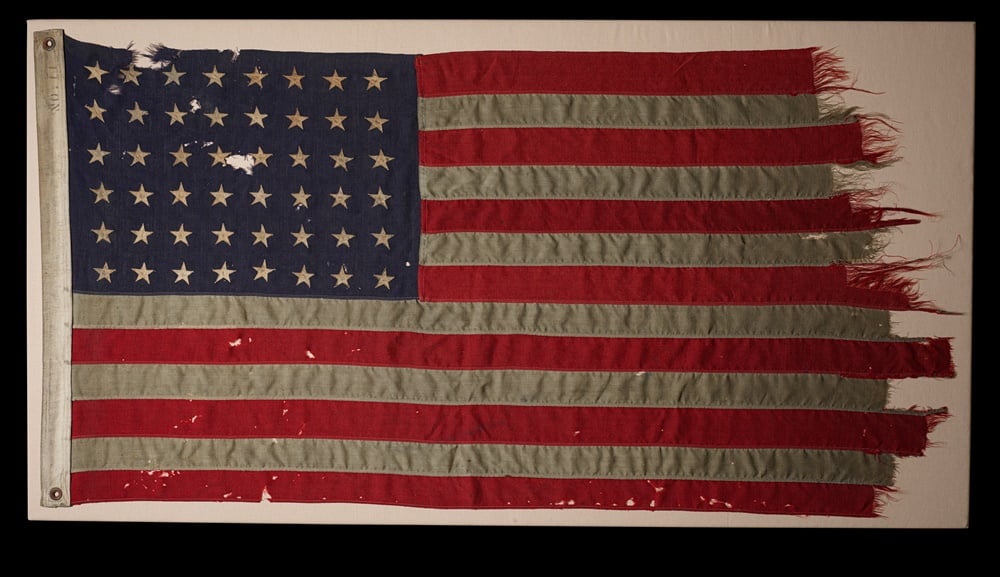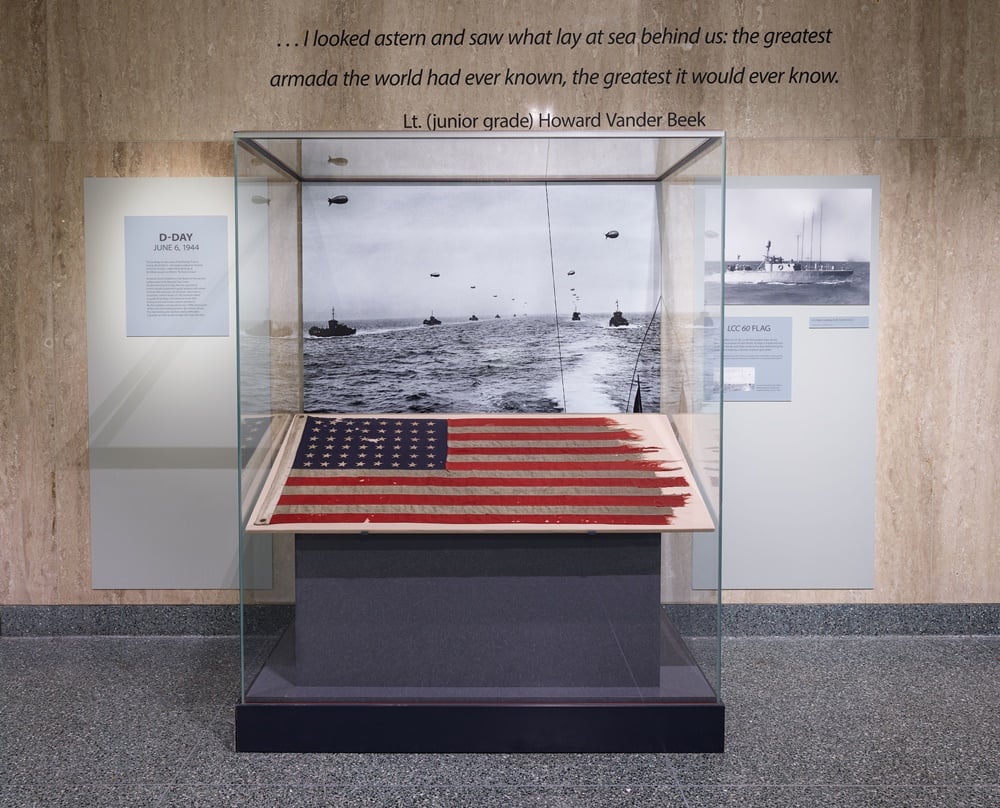On View
Dutch Art Collector Bert Kreuk Donated a Historic D-Day Flag to the Smithsonian—and Got a Personal Thanks From Donald Trump
The collector says the flag has personal significance for his family.

The collector says the flag has personal significance for his family.

Eileen Kinsella

These days, President Donald Trump does not spend much time with contemporary art collectors who aren’t already members of his cabinet. But earlier this month, Trump shared a podium with Dutch collector and self-proclaimed “art flipper” Bert Kreuk in a White House ceremony to mark his donation of a historic US flag to the Smithsonian Institution in Washington, DC. The flag went on display at the National Museum of American History on Friday.
Kreuk, whose art collection includes work by Mark Bradford, Peter Doig, Luc Tuymans, Danh Vo, and others, made the slightly uncharacteristic acquisition in 2016. He bought the flag, which was flown on US Navy vessel LCC 60, the boat that stormed the beaches of Europe on D-Day, for some $514,000 at Heritage Auctions. His family owed the servicemen on that boat a great debt, he says, since he lost relatives in Nazi bombing raids on Rotterdam in 1940.
“I was actually quite surprised it was coming to auction,” Kreuk recalled of the flag. “I thought, ‘This belongs in a museum,’ and immediately knew I wanted to be the guardian of this flag and give it back to the United States.” He ultimately decided the 75th anniversary of the D-Day landing this year would be the perfect occasion to donate it.

The 48-star flag flown on Landing Craft, Control 60 (LCC 60) off Utah Beach in Normandy, France on D-Day was acquired by Dutch collector Bert Kreuk. Kreuk and his uncle and mentor Theo Schols donated the work to the Smithsonian Institution. Image courtesy of the Smithsonian Institution, Washington, D.C.
Kreuk presented the flag after a meeting between President Donald Trump and Dutch Prime Minister Mark Rutte at the White House on July 18. He described his exchange with the president as a “short and a short interaction” during which Trump “was very gracious and appreciative. We both agreed [the flag] belongs to the United States.”
The 30-by-57-inch flag has some discoloration and staining from diesel exhaust, along with general wear and tear as a result of its wartime use. It also has a symmetrical hole that is believed to have come from a German machine gun bullet.
In a speech to mark the gift, Kreuk said he chose to focus on inclusivity and stressed that the donation of the flag “is not about politics, This flag is about freedom and those people who fought and died on the beaches.”
@BertKreuk speech @WhiteHouse with @realDonaldTrump and @MinPres during the handover ceremony of the d-day flag pic.twitter.com/HxMnV8vWpu
— Bert Kreuk (@BertKreuk) July 21, 2019
The American History Museum’s curator, Jennifer Jones, recalled seeing the flag up for auction and hoped that it would eventually be donated to a museum—”not knowing that we would eventually be able to one day say the National Museum is now in possession of this fantastic flag and piece of history, so that all Americans can see it and understand D-Day better.”
The Battle of Normandy, which commenced on June 6, 1944, was one of the largest seaborne invasions in history and was ultimately what liberated Western Europe from Nazi control. On D-Day, Lieutenant Howard Vander Beek of the US Navy Reserve (who previously owned the flag before selling it at auction) described what he saw as “the greatest armada the world had ever known, the greatest it would ever know.”

The ribbon cutting ceremony for donation of the D Day flag at the Smithsonian in Washington, D.C.
Image courtesy of the Smithsonian Institution.
The D-Day exhibition will be up for roughly another year at the American History Museum. Jones hopes to keep the flag on display as part of the permanent collection exhibition, while also taking into account preservation and condition issues, such as light exposure, so that the flag can be viewed by future generations.
Although Kreuk only served as the custodian of the flag for three years, it will live on on the cover of his memoir, Art Flipper, which recounts his adventures in art collecting and his high-profile legal dispute with Vietnamese-Dutch artist Danh Vo.
The flag, which Kreuk donated on behalf of his uncle Theo Schols, “belongs to the United States,” he says. “It’s about honoring the people who died for our freedom.”